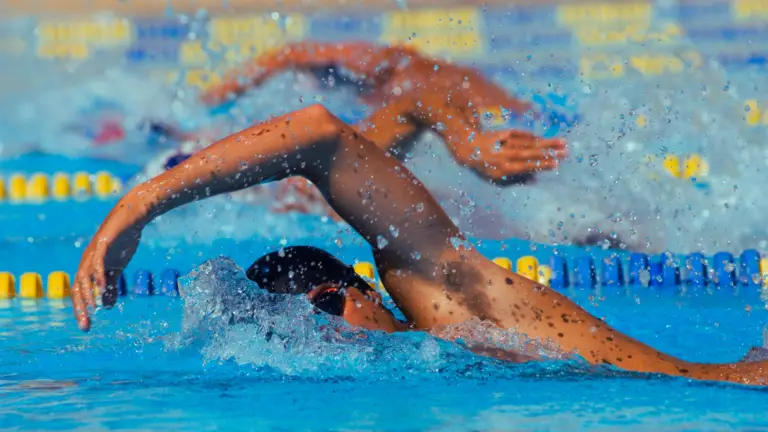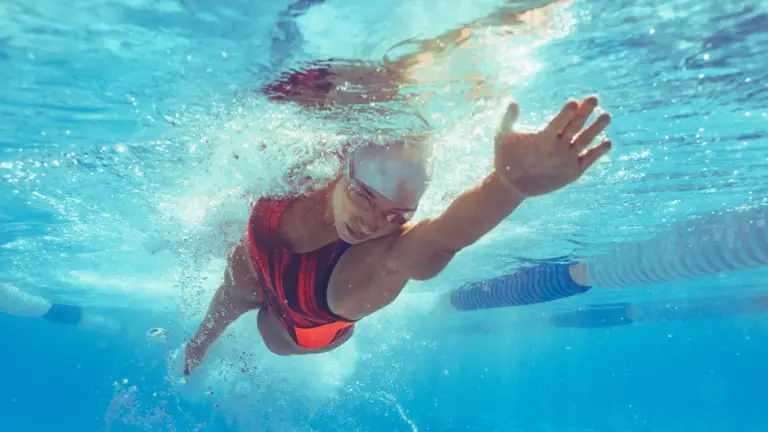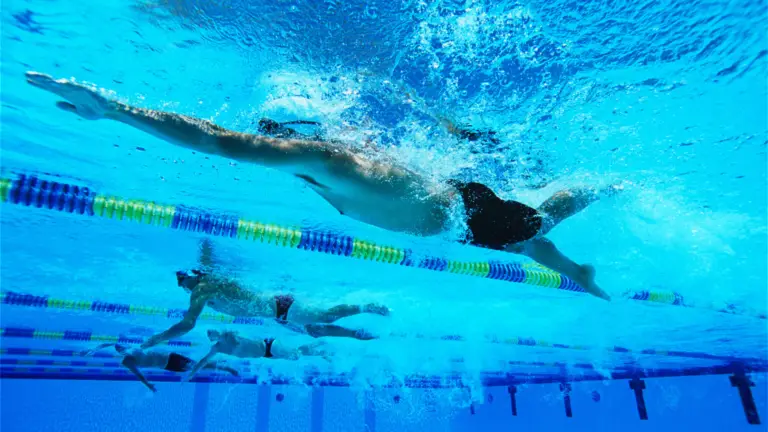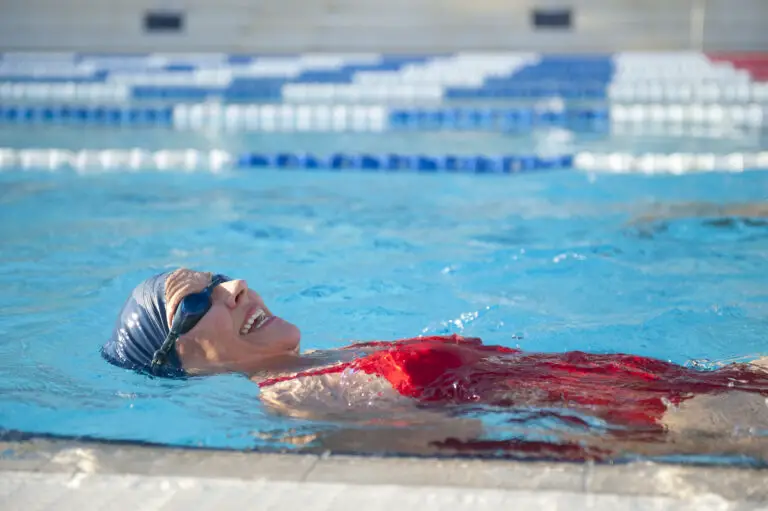
Whether you’re a swimmer, a coach, or a parent, understanding swim meet terminology is crucial. It’s the language of the pool, the words, and phrases that define the sport, and its many nuances. In this article, we aim to unravel this language, providing you with a comprehensive guide to swim meet terminology. From race-specific terms to a detailed glossary, we’ve got you covered. So, let’s dive in!
What is a Swim Meet?
A swim meet is a competitive event where individual swimmers or teams gather to showcase their skills and compete against one another. It is typically organized by a swimming governing body and follows specific rules and regulations. The purpose of a swim meet is to provide a platform for swimmers to showcase their skills, compete with others, and strive for personal bests. It’s where the thrill of the race comes to life, where the adrenaline rush fuels the drive to touch the wall first.
Swim meets can involve individual athletes competing against each other, or they can be team competitions. In individual competitions, it’s all about the swimmer’s personal performance. Each swimmer races against the clock and the other competitors, aiming for the fastest time.
In team competitions, on the other hand, it’s all about collective performance. Teams of swimmers from different clubs or regions compete against each other, with the overall performance of the team determining the winner. It’s a test of not just speed but also teamwork and strategy.
Whether you’re an individual athlete pushing your limits or part of a swim team striving for collective glory, understanding the ins and outs of a swim meet is crucial. And that starts with understanding the terminology.
So, let’s dive deeper into the language of the pool with our comprehensive glossary of swim terms!
General Swim Meet Terms
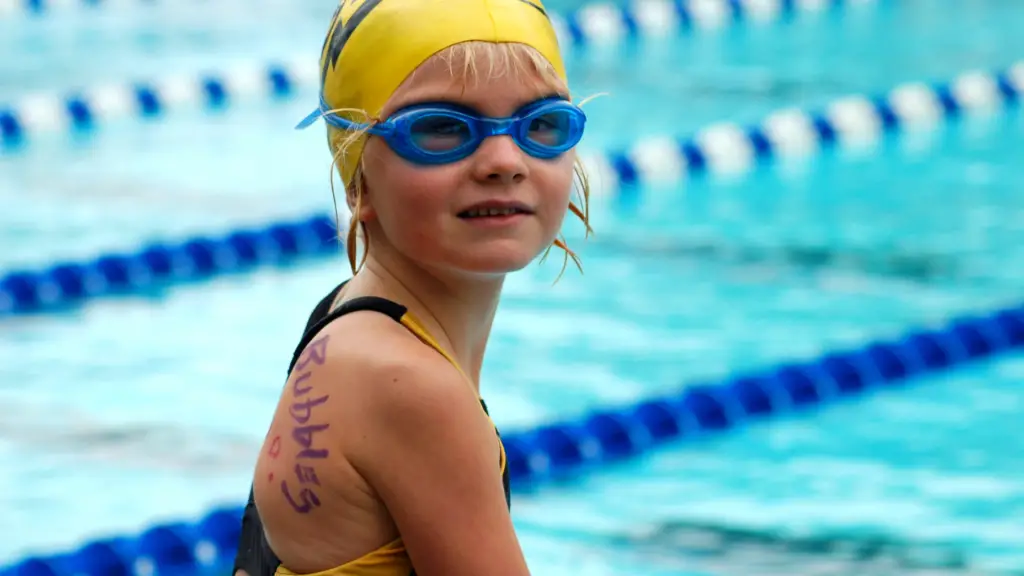
Command: On the long whistle from the referee, swimmers step onto the starting platform or, in the case of the backstroke and medley relay races, enter the water. On the starter’s command — “take your mark” — swimmers immediately take a starting position, with at least one foot at the front of the starting platform. When all swimmers are stationary, the starter gives the starting signal.
Disqualification (DQ): This is a swimmer’s worst nightmare. It means the swimmer has committed an infraction of the rules that warrants removal from the event and no official time.
Exchange: Occurs during relays when one swimmer touches the wall and the next swimmer dives in. Relay exchanges are often where false starts occur, as swimmers on the blocks are looking for an edge and accidentally dive in before the previous swimmer touches the wall. A swimmer can leave the blocks up to .03 of a second before the previous swimmer touches the wall, but the team is disqualified if a swimmer leaves any time earlier than that.
False start: This occurs when a swimmer either leaves the starting block or is moving on the block before the starter officially starts the race. Since 1998, there has been no warning false start. Any swimmer starting before the starting signal will be disqualified. If the starting signal sounds before the disqualification is declared, the race will continue, and the swimmer(s) will be disqualified upon completion of the race.
Final: The last race of every event and the one in which medalists are determined. Typically, a final comprises the eight fastest swimmers who qualified from two preceding semifinal races.
Flip turn: Used in freestyle and backstroke races, where swimmers somersault before reaching the wall and push off with their feet, never touching the wall with their hands.
General Warm-Up: This is the period when the primary competition pool is accessible for all swimmers to enter the water and ready themselves for the upcoming meet.
Heat: This refers to a division of an event when there are too many swimmers to compete at the same time standards. The first heat consists of the slowest swimmers, whereas the last is comprised of the fastest. The results are compiled by swimmers’ time swum after all heats of the event are completed.
Heat Sheet: This is essentially the program for the swim meet. It lists all the event numbers, swimmers, their seed times, and their lane assignments. Learn how to read one here.
Meet Information: This refers to a comprehensive packet, available either online or at the pool, that provides crucial details about a meet. It includes information such as time standards, dates, times, and rules pertaining to the event.
Order of Events: This is a list included in the meet information that outlines the sequence and number of each event at a meet. It’s important to note that the order can vary from meet to meet.
Psych Sheet: This document ranks all the swimmers in each event from the fastest to the slowest. It serves as a useful tool for swimmers to understand their standing in the meet and get a sense of their competition.
Seed: This is the time a swimmer uses to enter a meet. It’s used to arrange the swimmers into heats and lanes.
Each of these terms carries its weight in a swim meet. For example, understanding your seed time can help you gauge your competition and strategize your race.
In my experience, understanding these terms not only made me a better swimmer but also deepened my love for the sport. It’s like being part of a special club with its own language. And now, you’re part of it too.
For a more in-depth look at swimming rules and regulations, check out the USA Swimming Rules and FINA Swimming Regulations. These resources provide a comprehensive guide to the official rules of swimming, both nationally and internationally.
The Pool Glossary
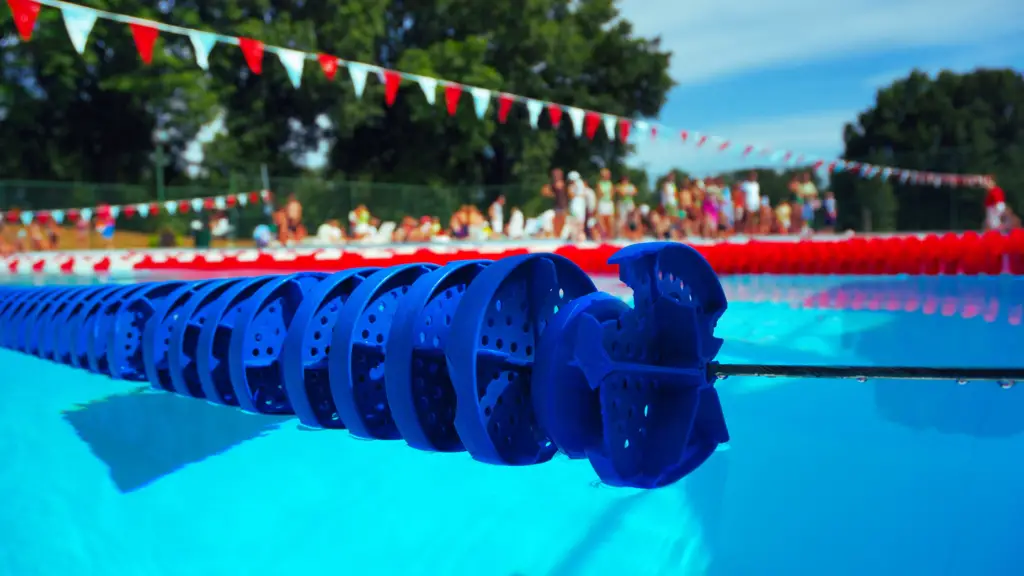
Block: Start blocks are elevated platforms positioned at the edge of the pool. Swimmers use these blocks to dive into the water at the beginning of a race, allowing them to gain momentum and streamline their movements.
Cooldown Pool: This is an additional pool made available for swimmers to aid in muscle recovery following a race. It may also be situated in the diving well area. This facility is sometimes referred to as a warm-up pool.
End of Each Lane: This refers to the wall of the pool where swimmers execute their turns and finishes.
Flags: Hanging flags placed above the pool five meters from each wall. They enable backstrokers to execute a turn more efficiently by providing a mark by which to count their strokes.
Gutter: This is the area along the edge of the pool where water overflows to keep the surface of the pool calm.
Lane: The specific area in which a swimmer is assigned to swim. Lanes are usually marked by ropes and buoys.
Long Course: Refers to the length of the pool. A 50-meter pool is used for competition. This is the standard for the Olympics and World Championships.
Short Course: A pool 25 yards or 25 meters in length. The standard for most high school and college swimming competitions in the U.S.
Touch Pad: This is a white or yellow electronic pad positioned on the wall(s) that records the time for each swimmer, including splits and finishes.
Warm-Up Pool: This is an additional pool made available for swimmers to get ready for their upcoming race. It’s also commonly referred to as a cooldown pool.
Understanding the Different Events and Strokes
Swim meets feature various event classifications to ensure fair competition and allow swimmers to showcase their skills in different disciplines. Here are a few common event classifications:
Freestyle: Freestyle events, denoted as “FR” or “Free,” involve swimmers using any stroke of their choice. However, it is most commonly associated with the front crawl stroke, which is the fastest and most efficient technique for freestyle swimming.
Backstroke: Backstroke events, denoted as “BK,” require swimmers to swim on their back while maintaining specific stroke techniques. The backstroke is performed in a supine position, with swimmers using alternating arm movements and a flutter kick.
Breaststroke: Breaststroke events, denoted as “BR,” are characterized by a unique arm and leg movement combination. Swimmers perform simultaneous arm movements in a circular motion while executing a whip kick.
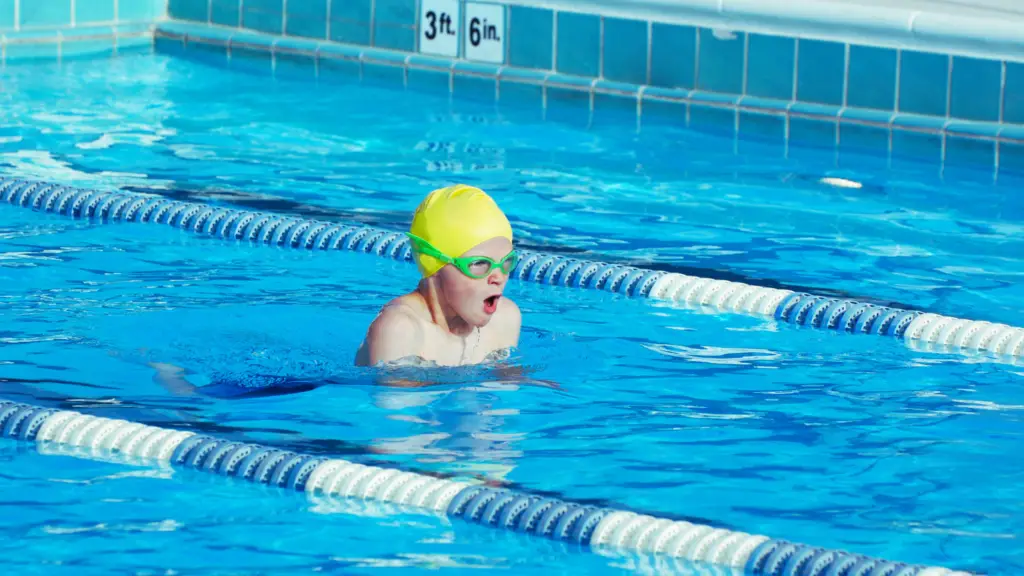
Butterfly: Butterfly events, denoted as “FLY,” showcase the most demanding and visually distinctive swimming stroke. Swimmers execute a simultaneous arm movement known as the butterfly stroke while performing a dolphin kick.
Individual Medley (IM): The Individual Medley event, denoted as “IM,” combines all four competitive strokes: butterfly, backstroke, breaststroke, and freestyle. Swimmers must complete equal distances of each stroke in a specific order.
Relay Events: Relay events involve teams of swimmers competing together, passing a baton to their teammates at the end of each lap. The team’s finishing time determines their placement in the relay event.
Officials and Roles
Swim meets rely on a team of officials to ensure fair competition and uphold the rules of the sport. Understanding the roles of these officials can enhance your overall understanding of a swim meet. Here are a few key roles you may come across:
Starter: The starter is responsible for signaling the beginning of each race. They ensure that all swimmers are ready, give commands for the start, and maintain the overall organization of the event.
Referee: The referee oversees the entire swim meet and ensures that all rules and regulations are followed. They have the authority to disqualify swimmers for rule violations and make final decisions on any disputes or protests.
Stroke Judge: Stroke judges closely observe swimmers during races to ensure that they comply with the specific rules and techniques of their respective strokes. They report any infractions to the referee for review.
Turn Judge: Turn judges focus on swimmers’ flip turns and open turns, ensuring that they execute these technical aspects correctly. They play a crucial role in maintaining fairness and consistency throughout the meet.
Scoring and Results
Understanding the scoring system and how results are determined is essential for both participants and spectators. Here’s a brief overview:
Points System: Swim meets often employ a points system to determine team rankings. Points are typically awarded based on swimmers’ finishing positions in each event. The higher the placement, the more points a swimmer earns for their team.
Individual Results: Individual results are determined by swimmers’ finishing times. These times are measured with precision using electronic timing systems or manual timekeeping, ensuring accurate and fair results.
Advanced Swim Terms
As you delve deeper into the world of swimming, you’ll encounter some more advanced terms:
Catch phase: The beginning part of the stroke where the arms and hands start to propel the body.
Drafting: A maneuver in which one swimmer is just behind another in an adjacent lane and uses the fast-moving water generated by their opponent to overtake the competitor.
Drag suit: A second, loose-fitting suit worn in workouts and warm-ups to add weight and resistance. The concept is similar to a baseball player adding weight to their bats in the on-deck circle.
Gravity Wave: This is a wave created by a swimmer’s movement that travels ahead of the swimmer. Swimmers can actually ride this wave to increase their speed.
Negative Split: This is a strategy where the second half of a race is faster than the first half. It requires a great deal of control and discipline.
Split Times: Split times indicate the time it takes for a swimmer to complete a specific distance within a longer race. These times are often recorded at regular intervals, providing valuable feedback for swimmers and their coaches.
Taper: This is the process of reducing exercise before a major competition to allow the body to rest and recover. It’s a delicate balance – taper too much, and you might lose your edge; taper too little, and you might be too tired to perform your best. Learn more about tapering here.
These advanced terms may not come up in every conversation, but understanding them can give you a leg up in the competition.
Benefits of Understanding Swim Meet Terminology
Understanding swim meet terminology has several significant benefits.
- It enhances communication and comprehension during meets. When everyone speaks the same language, it’s easier to understand what’s happening, follow the progress of the meet, and make quick, informed decisions.
- It facilitates effective collaboration between swimmers, coaches, and parents. When everyone understands the terms and phrases used in swimming, it’s easier to discuss strategies, analyze performances, and work together towards common goals.
- Understanding swim meet terminology can increase your enjoyment and engagement in competitive swimming. When you understand the language of the sport, you can appreciate the nuances of each race, celebrate the achievements of each swimmer, and fully immerse yourself in the world of competitive swimming.
In short, understanding swim meet terminology is not just about learning a list of words and phrases. It’s about becoming a part of the swimming community, sharing in its triumphs and challenges, and experiencing the joy and excitement of the sport to the fullest.
FAQs
Conclusion
Mastering swim meet terminology is key to fully immersing yourself in the world of competitive swimming. By understanding the specific terms, event classifications, and roles of officials, you’ll be well-equipped to navigate swim meets with confidence and engage in meaningful conversations about the sport. Keep expanding your swimming knowledge and embrace the exciting journey of being a part of this vibrant swimming community!
Did I miss anything? Let me know!


